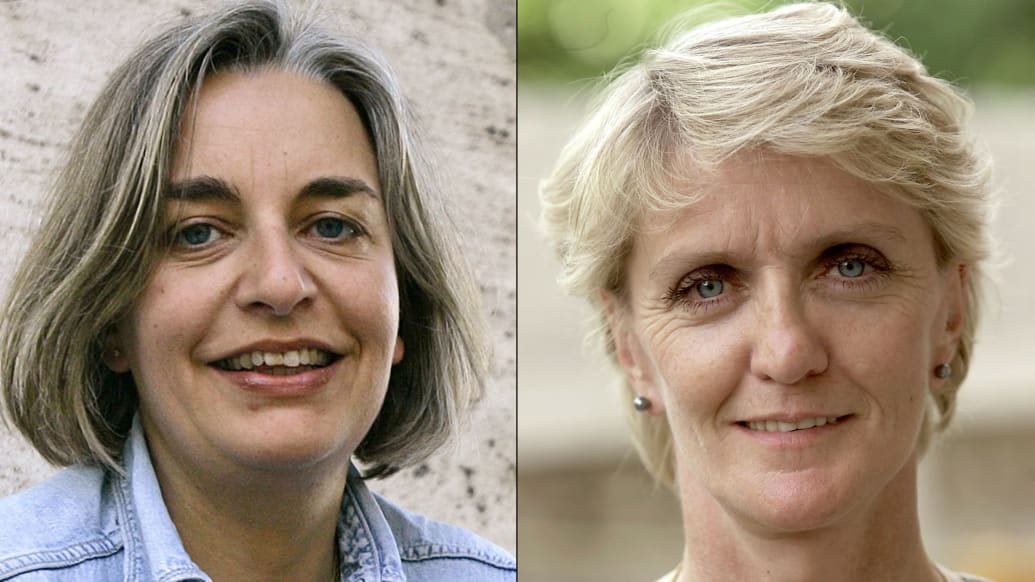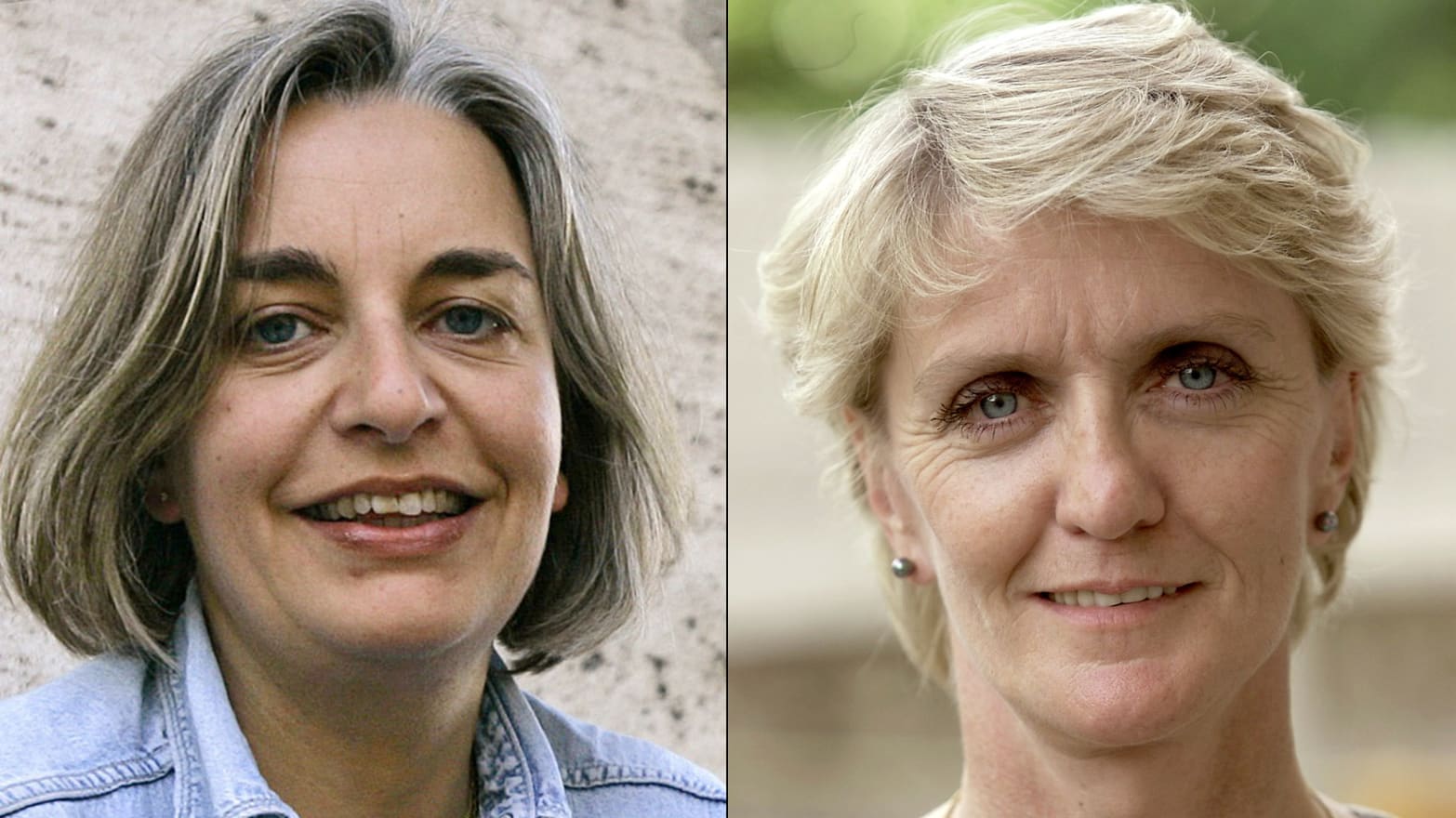When I heard Friday that my friends and colleagues Anja Niedringhaus and Kathy Gannon were attacked in Afghanistan, I froze.

Not Anja, I thought. An irrepressible, chain-smoking Associated Press photographer with a thick German accent, a raucous laugh, and a deft touch in the kitchen, she is the pro you want to have around when the story gets tough, or horrible. Anja always comes through, and she makes the awful somehow bearable.
My second thought: “Oh, hell. Kathy. You just lost your best friend.”
Anja and Kathy, a reporter for AP, were like sisters, each leaving their respective lives in Europe or Pakistan for weeks-long stretches of often-dangerous reporting in Afghanistan.
An Afghan policeman attacked the two Friday, killing Niedringhaus and leaving Gannon injured and recovering, according to the AP’s own report.
An AP TV freelancer traveling with them said the Afghan man opened fire on the two women as they sat in an AP vehicle, waiting in a convoy of election officials in Khost, eastern Afghanistan. The AP'er said Niedringhaus was killed instantly. Gannon was shot three times in the wrist and shoulder.
Anja and Kathy took risks almost no one else covering the war was willing to take, but they measured every journey carefully. I’d watch them weigh each step with longtime AP Afghan staffers, debating how best to minimize the danger if they decided the trip was worth the risk.
Neither was an adrenaline junky or cowboy—few journalists are. I’m daring to say that out loud because when my CBS News team was hit back in 2006, a car bomb tearing through our foot patrol, many asked that about me and my team—did we take a risk we shouldn’t have? Was it worth it?
Silence those thoughts, about then and now. Like my team members CBS Newsmen Paul Douglas and James Brolan lost in 2006, these two journalists are…were…consummate professionals. They took risks only when they saw a story they thought needed to be told, and when they did, assumed the risk of those they were covering, trading the safety of the AP bureau for the danger faced by a U.S. Marine or an Afghan elected official.
I first met Anja at AP’s Kabul bureau. She’d been injured by shrapnel from a grenade that had been thrown at the NATO patrol she’d embedded with. She was recovering, her leg wound stitched though still painful.
She was also fighting with her bosses to get back to the field. She wanted to finish her assignment with that patrol, and the guys she’d quickly befriended.
She connected with those she photographed, whether it was a gravely injured American she followed onto a rescue helicopter, and later tracked down stateside during his recovery —or an Afghan family in the south, describing how a U.S. soldier opened fire on their loved ones.
Anja’s AP bosses did let her go back months later, after she’d fully healed.
I first met Kathy when I was a CBS News reporter, covering the fall of Taliban in 2001. Kathy was inside Afghanistan, well ahead of most of the rest of us thanks to her amazing source network.
I read her AP report that said the American Christian missionaries had been taken south, removed from their Kabul prison where the Taliban held them for months, and I mentioned it to a U.S. official. The U.S. military at that point was bombing anything on the main road south out of Kabul, especially convoys of the black-turbaned Taliban.
The official reached out to AP and Kathy was able to help, providing assistance the official said was crucial to the hostages’ later rescue.
Kathy and Anja both always looked out for the innocents—and for reporters new to a beat, like me when I joined the AP. Kathy and her husband threw me a dinner party in Islamabad —one of her famous salons of top Pakistani officials, scholars, artists and various international guests.
In Kabul, Anja culled through the hundred-plus photos I’d brought back from a week of reporting, and found a few that could run with my print stories, guaranteeing a much wider play.
Both made a TV-returned-to-print journalist feel welcome in the wires fraternity, and considered my past injury just another part of my resume.
AP has a proud tradition of letting injured journalists return to the field, when they ask to go. Both AP’s foreign editor John Daniszewski and head of photography Santiago Lyon were injured badly in conflicts in Europe and later returned to the front lines.
That’s why I had departed CBS for the AP, and left only last month after four great years covering stories from Washington, D.C., to Afghanistan and Pakistan. The car bomb that hit our team also killed U.S. Army Capt. James Alex Funkhouser and his Iraqi translator who we can only refer to as “Sam” to protect his family, and left me pretty badly injured. It took several months to fully recover and my CBS News family couldn’t bear the thought of sending me back.
AP let me return to a job that is more like a mission, just as Anja returned, and I know eventually, Kathy will return too.
The hardest part of my particular journey was trying to make peace with the fact that I survived, while my team did not. That’s the path Kathy is on now.
There is nothing I can say or write that will make that journey easier.
So I’ll close by saying: Anja and Kathy, it’s been an honor to know both of you, and I look forward to reading what Kathy will write when she is ready to come back.

